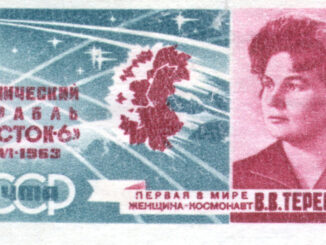
First flight of Fiat G.50 Freccia (English: Arrow), an Italian fighter aircraft.
The Fiat G.50 Freccia was created to meet the demand of Regia Aeronautica (the Italian Air Force) for a modern interceptor aircraft. In April 1935 the Fiat Aviazione company launched works on the project of their new aeroplane, carried out by a construction team led by Giuseppe Gabrielli.
Gabrielli´s team proposed a low-wing, single-engine monoplane of all-metal construction (except for the ailerons, that were covered with canvas) and an enclosed cockpit. The aircraft was powered by Fiat A.74 R.C.38 radial engine, generating a maximum power of 960 hp.
On 26th February 1937, the prototype of Fiat G.50 performed its maiden flight, flown by Comandante Giovanni de Briganti, a chief test pilot of the new Fiat fighter programme. The aircraft proved to perform very well – during the first flight it managed to reach a speed of 472 km/h and climb to an altitude of 6,000 metres in 6 minutes and 40 seconds. In October 1937, Fiat G.50 was officially presented to the public, during the Milan International Aeronautical Show.
Although Fiat received the first order for forty five G.50s already in September 1937, the Freccia was still a subject of evaluation by the air force. A fighter competition, named Caccia I (‘Fighter One’), was launched, aimed to compare Fiat´s aircraft with two other aeroplanes being developed in response to aforementioned specification – Macchi MC.200 and IMAM Ro.51.
Caccia I competition ended on 9th June 1938, with the MC.200 to be the fastest and the G.50 to be the most manoeuvrable aircraft in the contest. As a result, the Reggia Aeronautica decided to place an order for both Fiat and Macchi fighters, while rejecting the Ro.51 project.
An interesting fact is, that the G.50 was chosen despite a few tragic accidents that occurred during the time of the competition. On 8th November 1937, Giovanni de Briganti was killed in the second Freccia prototype, another Fiat crashed during the sixth evaluation flight and finally, a tragic incident marked the official presentation of the G.50 to King Victor Emmanuel III and Prime Minister Benito Mussolini – one of three Fiats performing a flying display went into an uncontrolled spin and crashed, killing its pilot.
With the introduction of the G.50 Freccia, the Italian Air Force acquired a modern, manoeuvrable and reliable fighter, being also the Fiat´s most advanced aircraft of the mid-war period. However, a rapid development of aviation in the late 1930s made it already a bit obsolete at the outbreak of the World War II. Underpowered engine and poor armament, already noted during the evaluation period, were the main disadvantages of Freccia in real combat, In addition, the enclosed cockpit was made of poor quality plexiglass and Italian pilots often were flying G.50s with canopy locked in open position. As a result, about 200 Fiats of the late production were manufactured in the open-cockpit configuration.
A total of 784 Fiat G.50 s Freccia aircraft were built, in approximately ten versions (including prototypes equipped with more powerful engines and even a prototype of carrier-borne variant). Obviously, the Reggia Aeronautica was the main operator of the G.50 fighters but almost 60 aeroplanes were sold to other countries: Finland (35), Spain (13) and Croatia (10).
Despite the already mentioned disadvantages, Freccia has a very impressive and successful combat history, especially when regarding the early years of the World War II. It started already in January 1939 when a group of G.50 was sent to Spain, in support of the Aviazione Legionaria during the Spanish Civil War. And later, after being handed over to Spaniards, they were also used in Morocco.
When Italy joined the war, on 10th June 1940, the G.50s of the Reggia Aeronautica participated in raids against Corsica, escorting SM.79 bombers. Then, in September the same year, Corpo Aereo Italiano (the Italian Air Corps) based in Belgium took part in the Battle of Britain, although just with minor operational success. The Italian Fiat G.50 fighters were used also during the campaigns in North Africa and Greece. And since 1943, the Freccia became a multi-role fighter, equipped with bombs and used for ground-attack purposes during the Italian Campaign and the Allied invasion of Sicily.
Nevertheless, Fiat G.50 recorded the longest and most successful service not with the Italian Air Force, but with Ilmavoimat – the Finnish Air Force. The Italian fighters that arrived Finland in February 1940, were introduced at the last days of the Winter War. Although initially not liked by the Finnish pilots (mind the open cockpit configuration here), they played a significant role in the Continuation War, proving to be full-blooded interceptors.
After the war, a few G.50s were still used in Finland for training purposes, with the last aircraft being retired in 1946.
Since 25th June 1942, until the first months of 1945, overall over a dozen of the Freccia fighters were also operated by Zrakoplovstvo Nezavisne Drzave Hrvatske (the Air Force of the Independent State of Croatia) and the Croatian Air Force Legion by the Luftwaffe. Apart from a short episode from 1942 – when a squadron of the Croatian G.50s was deployed to Ukraine – those aircraft were operationally used against the Yugoslav Partisans, over the former Yugoslav territory – Croatia, Bosnia-Herzegovina, Serbia and Dalmatia. Some of them were captured by partisans and finally, after the war, used by the newly formed Yugoslav Air Force.
Among the most successful air aces flying the Fiat G.50 Freccia were Furio Lauri (18 confirmed victories), Oiva Tuominen (23 victories) and Olli Puhakka (11 or 13 victories, depending on source).
Today, the sole survived Fiat G.50 Freccia is exhibited in the Aeronautical Museum Belgrade in Surčin, Serbia.
Picutred above: Fiat G.50s of 20º Gruppo Caccia Terrestre, 56º Stormo – Ursel, Belgium, 1940 (photo source: Wikipedia, public domain, author unknown)



